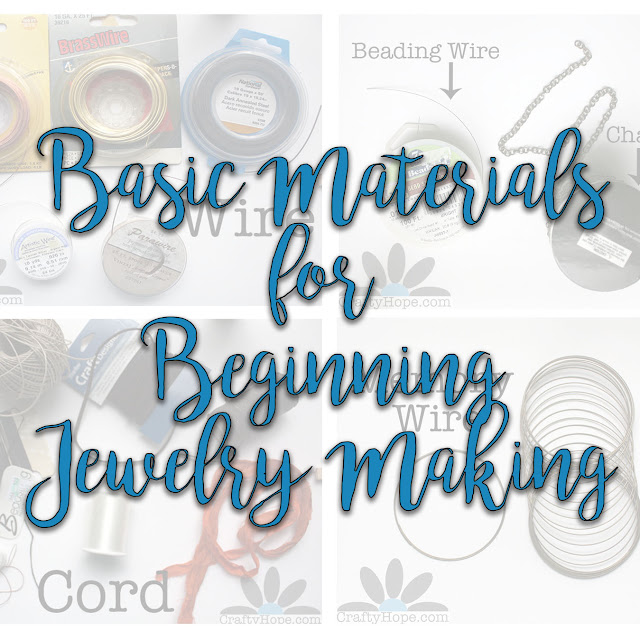Previously, I went into details about the tools needed to begin making jewelry. In this second lesson, I'm going over some of the materials used to make jewelry.
Like the first part of this series, I also made a video of these Jewelry-Making Basic Materials if you'd rather watch than read, or if you like to do both.
Now for my explanation on jewelry-making materials.
Chain: This is probably the most basic of all jewelry-making materials. Chain generally consists of links of metal or other material connected to one another. It's perfect for simply adding charms or a focal piece to easily make a completed piece of jewelry. As well, chain makes a great accent like tassels or helps extend too-short pieces.
Beading Wire: Also called bead stringing wire, beading wire is a material created especially for jewelry-making. It comes in spools and is made of tiny, twisted wires coated with nylon. The nylon helps protect the wire and extend the life of your projects. Beading wire is most often used in conjunction with crimp beads to create necklaces and earrings. It can be found in a variety of sizes and colors.
Cord: This is probably the widest section of jewelry materials. Cord includes waxed linen cord, beading thread, sari silk ribbon, leather cord, invisible nylon cord/thread, hemp, and many, many more. Waxed linen is waxed to increase its durability and workability. It (as well as hemp) are often used with knotting/macrame techniques. Beading thread is intended specifically for jewelry-making. Most often, it's used with seed beads for tiny, intricate work. Invisible nylon cord is much like fishing line (which I have used before) and usually used when you want the material to be as invisible as possible. Of course, each of these cords has a great many uses beyond the ones I've mentioned.
Memory Wire: I almost left this one out of the video, and it's one of the simplest to use. Memory wire comes in a coil and retains its shape, hence the name. When pulled, it springs back into shape like a slinky. I've found ring, necklace, and bracelet memory wire; but the bracelet shape is by far the most popular. It's most often found in a silver-tone, but other metal tones are also out there.
A material I've left off this list is Elastic. It's not something I use or keep on hand. I admit that I have trouble tying the elastic to my satisfaction, even with glue. As well, much of the jewelry I get from friends to fix are bracelets that have been strung on elastic and have popped. It's simply not a reliable material. As such, I don't use it personally.
I know that I've omitted a ton of more in-depth details about each of these materials, but this should sum it up for those just starting out. However, if you've got something to add or have questions, please don't hesitate to let me know in the comments.
Linking up at Sweet Inspiration Link Party, Dare to Share Saturday, and Saturday Sparks Link Party at Pieced Pastimes.





























































